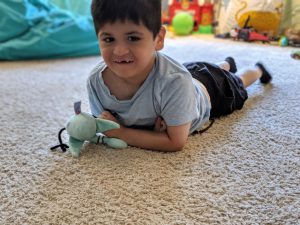 Every once and awhile you stumble upon a book that seems to magically connect with a particular student in a way that you could not predict. A friend had given me a massive box of hand-me-down books, and inside I found the wordless book, Wonder Bear. It was not a book I was familiar with, but since I’ve had such success with wordless picture books I decided to try it with Joey. I thought it would give us many opportunities to talk and describe the pictures, but I had no idea it would engage Joey as much as it did.
Every once and awhile you stumble upon a book that seems to magically connect with a particular student in a way that you could not predict. A friend had given me a massive box of hand-me-down books, and inside I found the wordless book, Wonder Bear. It was not a book I was familiar with, but since I’ve had such success with wordless picture books I decided to try it with Joey. I thought it would give us many opportunities to talk and describe the pictures, but I had no idea it would engage Joey as much as it did.
What Does the Data Say?
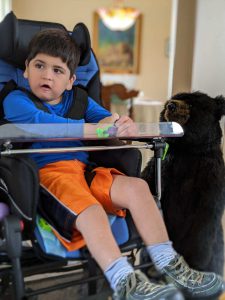 Now that Joey and I have been back in person for over a month I wanted to take a look at his data and see how he is doing. While I feel like we still haven’t gotten back into the swing of the eye gaze, I am very aware that what I “feel” might not always be accurate. Sometimes I need to step back and look at what the data tells me.
Now that Joey and I have been back in person for over a month I wanted to take a look at his data and see how he is doing. While I feel like we still haven’t gotten back into the swing of the eye gaze, I am very aware that what I “feel” might not always be accurate. Sometimes I need to step back and look at what the data tells me.
For Joey’s use of the eye gaze device within ten minute time samplings, he is showing a slight decline since the winter. In January, February, and those few weeks we were able to meet in March Joey was using the device fluidly, with an average of 25 hits per ten minutes. However, in February he was down to around 16 hits per ten minutes, so his average of 21 hits in July is not that far off. (January was as high as 28).
Honoring Total Communication
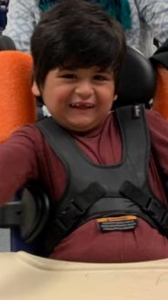 Before I was back in person with Joey his Occupational Therapist and I touched base. Although each person on a child’s team has a speciality, nothing in development happens in isolation – a child cannot learn to communicate without also developing their motor skills – and vice versa. Typical development occurs with systems relying on one another, and when development is disrupted each system must continue to be addressed. In truth, I think Joey’s OT and I wish we were able to collaborate more frequently. I can always tell when he has made sudden gains in OT because the gains coincide with progress in his communication and academics.
Before I was back in person with Joey his Occupational Therapist and I touched base. Although each person on a child’s team has a speciality, nothing in development happens in isolation – a child cannot learn to communicate without also developing their motor skills – and vice versa. Typical development occurs with systems relying on one another, and when development is disrupted each system must continue to be addressed. In truth, I think Joey’s OT and I wish we were able to collaborate more frequently. I can always tell when he has made sudden gains in OT because the gains coincide with progress in his communication and academics.
This time, his OT and I wanted to connect over his communication. Unfortunately, an eye-gaze AAC device is difficult to use during OT anytime, but it is nearly impossible during tele-health sessions. And without an ability to effectively communicate his preferences, Joey (and everyone) was becoming increasingly frustrated.
Using Wordless Shorts to Inspire Language
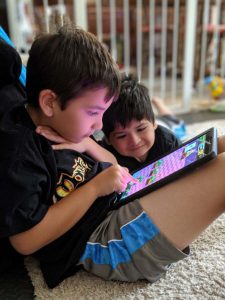 A few weeks ago I was able to watch a webinar from Lauren Enders in regards to fun activities to jumpstart AAC learning. Last week I shared how much the need for making our lessons fun and connecting with our students resonated with me, particularly as we begin to meet with our students in person and may feel pressured to make up for lost time.
A few weeks ago I was able to watch a webinar from Lauren Enders in regards to fun activities to jumpstart AAC learning. Last week I shared how much the need for making our lessons fun and connecting with our students resonated with me, particularly as we begin to meet with our students in person and may feel pressured to make up for lost time.
I loved many of the ideas Ender shared, and one that I cannot wait to use with Joey is to use wordless animated short videos. Although I have always loved wordless books it had never occurred to me to use wordless videos to encourage language use.
Language is about Connection
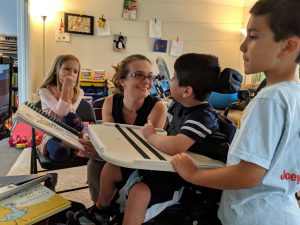 This past week I had the opportunity to listen in to AAC Learning webinar by Lauren Enders. It was chalk full of ideas, tips, and resources, and I am sure I will slowly reflect on them over time. The tips and ideas made me miss Joey and my work with him so much. I cannot wait to be back in person!
This past week I had the opportunity to listen in to AAC Learning webinar by Lauren Enders. It was chalk full of ideas, tips, and resources, and I am sure I will slowly reflect on them over time. The tips and ideas made me miss Joey and my work with him so much. I cannot wait to be back in person!
The first tip Enders gave was to ask yourself – “Would this be fun for me?”
- 1
- 2
- 3
- …
- 12
- Next Page »


